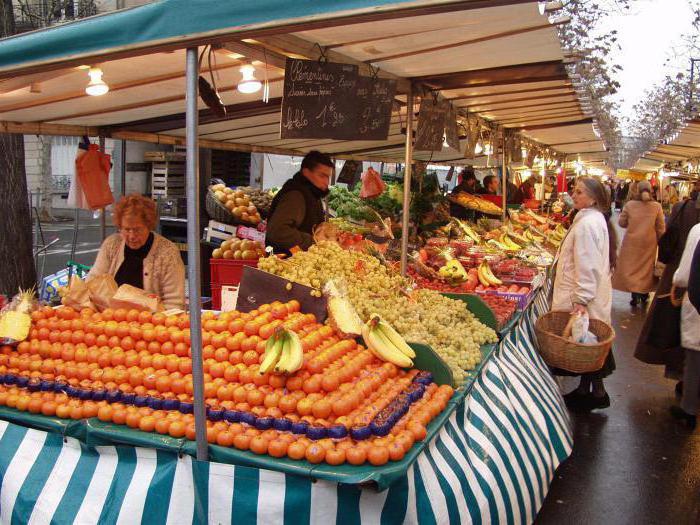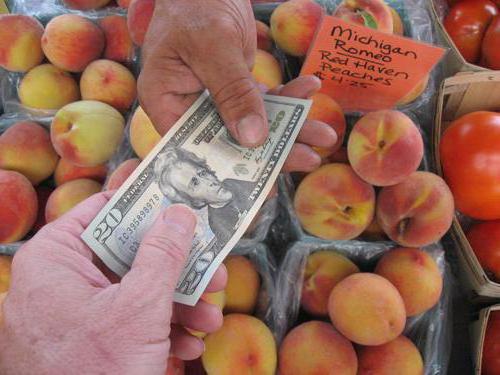The market is a system of economic relations between producers, intermediaries and consumers of goods and services. This is a complex system with its own rules and means of regulation, types and types of markets.
Market classification
Leading economic theorists classify markets according to the following criteria:
- coverage area;
- subjects involved in market relations;
- types of objects of market relations;
- a form of competition;
- level of the presented assortment;
- legality;
- sales volumes;
- level of economic independence.
Territorial division of markets
Types of markets on a territorial basis can be divided into:
- global - a market in which, when exchanging goods and services, all countries interact or can practically interact;
- national - a market covering the territorial scale of a particular country;
- regional - a market of regional importance, on the conjuncture of which is influenced by regional trends;
- local - a microeconomic market.
Markets by type of relationship objects
For accurate determination of market value, as well as the correct application of market economic laws markets divided by goods and services with similar properties. Markets are:
- goods and services - an object where redistribution of finished goods and services takes place;
- means of production - operations with the means necessary for production are under way on the market: both cash and commodity;
- foreign currencies - the market establishes quotes and the ability to convert monetary units of different countries, necessary for settlements between counterparties;
- securities where the value of companies and monetary assets is established;
- scientific and technical developments and new technologies and information - a market operating with intangible objects - the results of intellectual work;
- labor - in this case, the product is a person and his ability to work, which is determined here depending on personal qualities.
Competition. The concept of the market. Types of Competition Markets
The following forms of its structure can influence the pricing of a market: competitive, oligopolistic competition, monopolistic competition, pure monopoly.
Competitive or objects of pure competition - types of markets in the economy in which there are many buyers and sellers of goods with similar or identical characteristics. None of the participating counterparties can significantly affect the pricing or volume of goods offered for sale. These types of markets in the economy are balanced and take into account the requirements of sellers and buyers alike. Sellers make minimal use of marketing gimmicks, tools for developing products, stimulating demand and rising prices. Competitive markets are in absolute demand.

Monopolistic main types of markets
Market monopolistic competition It consists, as well as competitive, of many sellers and buyers. These types of markets have a feature of price offers. The goods here are not offered at the general market price - transactions can take place at prices established as a result of negotiations between a specific seller and buyer, regarding a specific quality and quantity of goods. Differences affecting prices may also apply to additional services and services that accompany the goods and services sold.Seeing the difference in goods and related services, customers, depending on personal expectations, are willing to pay more or less. Greater effectiveness in the market with monopolistic competition are advertising and branding of goods.
Oligopolistic markets - types of markets in which there is a small number of sellers. Such a quantity is explained by the difficulty of entering the market due to natural factors (small quantity of goods) or artificially created (unfair competition) factors. Each seller at such an object instantly responds to the slightest changes in pricing from competitors. The choice in such markets is often directed towards the seller with the lowest price.
Pure monopoly markets are types of single-seller markets. Such conditions can be created with the dominance of a state organization, a private regulated monopoly, and a private unregulated monopoly. So, for example, when establishing a state monopoly, thanks to pricing, not only economic, but also political interests can be achieved, and the price itself can be lower than the cost of goods or services offered. Excessive value added of goods and services may also be established. This is done to reduce the consumption of these benefits. With a regulated monopoly, the price level is always controlled by the state. With an unregulated monopolist, it can set a price that the market can only withstand based on its beliefs.
Types of markets in the economy of legality
The legislator establishes certain rules for the operation of markets, therefore, depending on their subordination to state regulations, they are divided into:
- Legal. Trade between counterparties is carried out with the implementation of all legislative norms.
- Shadow. Turnover in this market is not fully shown, or some state imperatives are ignored. At the same time, trade can be conducted with goods and services that are completely authorized for sale.
- The black. Types of markets in which illegal goods are traded with complete disregard for laws.
Classification of markets by type allows you to determine strategies for promoting goods and services, correctly form your offer and behavior for the most profitable transactions.






